Not only do these veggies have distinct pigmentation but they also possess several health benefits. Here are the Best Blue Vegetables!
These Best Blue Vegetables not only look good, but they are also rich in anthocyanins, antioxidants, and resveratrol, making them great for the heart and immunity. Grow them today for better health.
Find out the Best Vines with Blue Flowers here
Best Blue Vegetables
1. Blue Cabbage
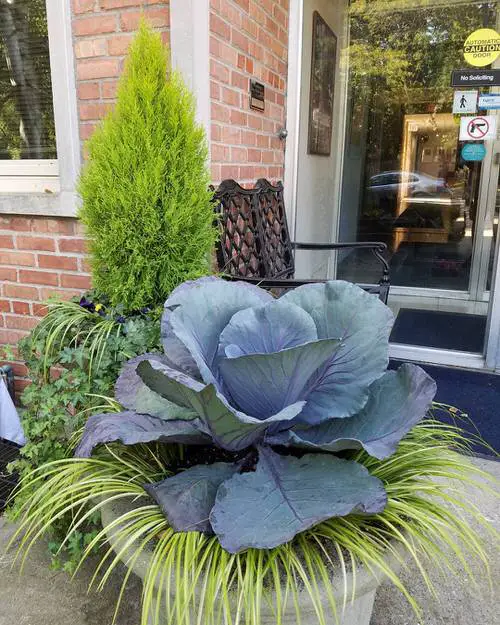
Botanical Name: Brassica oleracea var. capitata
‘Blue Dynasty,’ ‘Blue Vantage,’ and ‘Cheers’ produce purple-blue leaves. This versatile vegetable can be steamed, fermented, sauteed, or eaten raw.
Growing Tips: You can grow blue cabbage the same way as regular cabbage. See details here.
2. Blue Bayou Tomato

Botanical Name: Solanum lycopersicum ‘Blue Bayou’
This tomato has dark navy-blue to purple skin and gives off a sweet and fruity taste. Use it in salads for an amazing flavor and pop of color.
Growing Tips: Sow seeds indoors in a moist seed mix, and cover them with soil. For more details, read this article here.
Learn about Growing Roma Tomatoes here
3. Blue Milk Mushroom
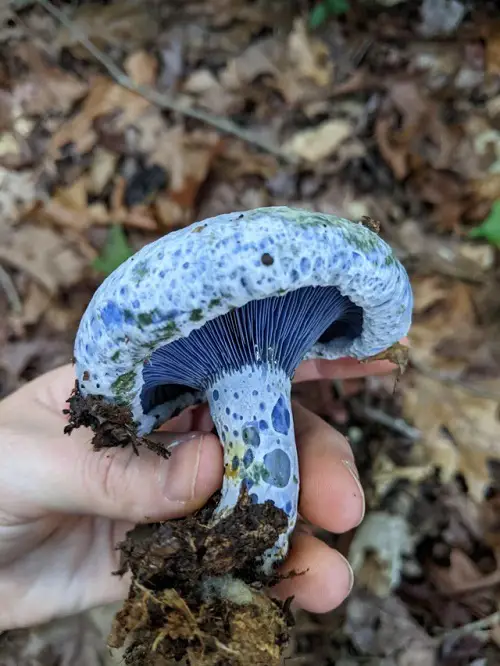
Botanical Name: Lactarius indigo
Also popular as a milk cap, this mushroom has a vibrant blue pigment and tastes best in vegetable broth, garnish, and sautee forms.
Growing Tips: Learn about growing mushrooms in coffee grounds here.
4. Blue Potato

Botanical Name: Solanum ‘Adirondack blue’
These potatoes have a purple tinge and blue flesh. They have ‘Anthocyanins free radicals that help to reduce the risk of heart disease, stroke, and cancer.
Growing Tips: Here’s everything you need to know about growing potatoes.
5. Fahrenheit Blue Tomatoes
![]()
Botanical Name: Lycopersicon esculentum ‘Fahrenheit Blue’
This specialized cherry tomato variety has dark blue skin. They are anti-inflammatory and good for heart, blood pressure, and cardiovascular health.
Growing Tips: Sow seeds 1/4 inch deep in the soil, water well, and keep in bright and indirect light. For more details, click here.
6. Blue Carrots
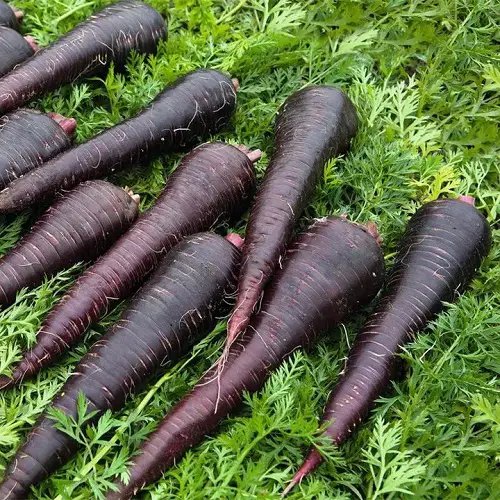
Botanical Name: Daucus carota ‘Blue’
Blue carrots are rich in beta-carotene and anthocyanins, which improve vision and memory. You can roast and serve them with a dip or air fry them as an easy side dish.
Growing Tips: Learn how to grow carrots in pots here.
Find out the Plants for Coloring Your Hair here
7. Blue Corn

Botanical Name: Zea mays
This corn is native to the Southwestern United States, Mexico, and the Southeastern United States. It has a mix of blue and purple tint that makes it stand out colorfully!
Growing Tips: Plant blue corn in well-draining sandy, loamy soil blended with organic matter. Click here for more details.
8. Blue Pansy

Botanical Name: Viola tricolor var. hortensis ‘Blue’
All parts of large blue pansy flowers are edible and high in antioxidants. They taste amazing in desserts. Just cut the bloom and sprinkle in a bowl of fruit salad.
Growing Tips: Plant the flowers in fertile soil in full sun or partial shade.
9. Blue Pumpkins
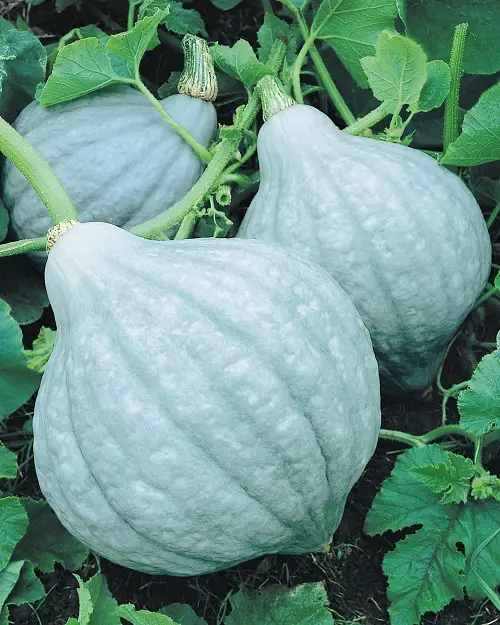
Botanical Name: Cucurbita maxima ‘Jarrahdale’
The Queensland Blue Pumpkin and the Jarrahdale pumpkin are two popular blue pumpkins from Australia with a light purple-blue hue. They have a savory taste and are ideal for pie filling.
Growing Tips: Check out our article on growing pumpkins here
Find out the Best Pumpkin Varieties here
10. Indigo Ruby Tomato

Botanical Name: Solanum Lycopersicum ‘Hybrid’
This blue tomato has a lovely aroma and sweet taste. These tomatoes are a good source of vitamin E. Use them in the same way as other tomatoes.
Growing Tips: Have a look at this video for growing blue tomatoes.
11. Filius Blue Pepper
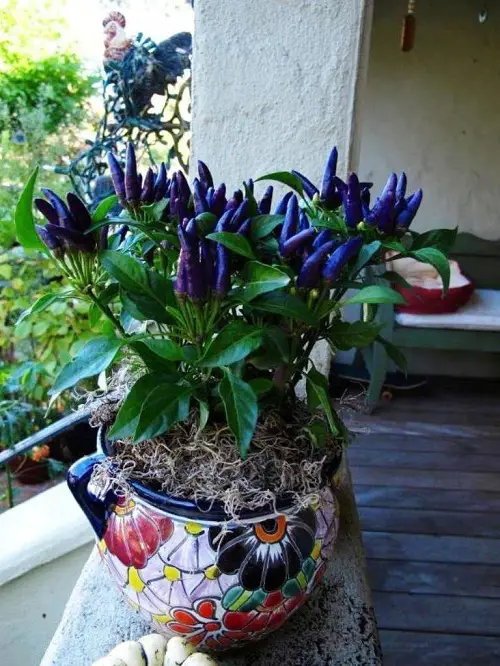
Botanical Name: Capsicum var. annuum ‘Filius Blue’
These traditional Mexican chilis have a deep purple-blue tint. Filius Blue Peppers are rich in vitamins C, A, copper, and iron. They taste amazing in salsa, sandwiches, and sauces.
Growing Tips: Check out our article on growing peppers here
Learn about Growing Hawaiian Chili Pepper here
12. Vates Blue Curled Kale
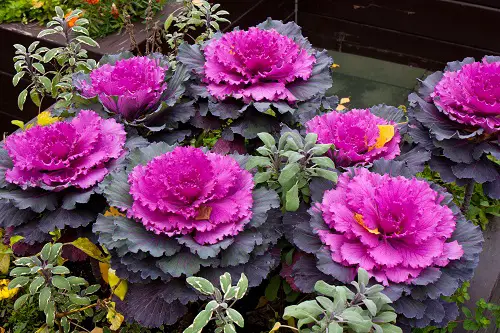
Botanical Name: Brassica oleracea var. acephala ‘Vates Blue Curled’
This low-growing dwarf kale has finely curled blue-green leaves. It grows up to 12-16 inches tall and matures in 50-80 days. Vates become tender and sweet after a light frost.
Growing Tips: Sow the seeds in early spring to mid-summer for summer to winter harvest. Click here for more details.
Learn about the Best Kale Varieties here
13. Tall Blue Lettuce
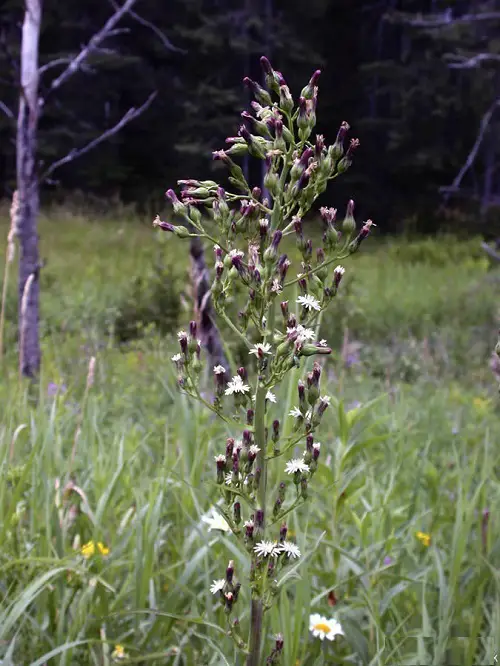
Botanical Name: Lactuca biennis
Also popular as biennial blue lettuce and blue wood lettuce, the plant grows up to 2-7 feet tall. The decoction of the roots of this lettuce is popular for curing vomiting, heart trouble, diarrhea, and pain.
How to Grow: Tall blue lettuce prefers partial shade to full shade.
Learn the Best Lettuce Harvesting Tips here
14. Nonna Agnes Blue Beans

Botanical Name: Phaseolus vulgaris ‘Nonna Agnes’ Blue’
The pods of this plant are green, and the inside has a dark blue or purple tint. You can use these beans in curies or simply add them to salads after sauteeing.
How to Grow: Sow the seeds 1-1.5 inches deep and 2.5 to 3 feet apart.
Learn about Growing Chickpeas here
15. Eggplant
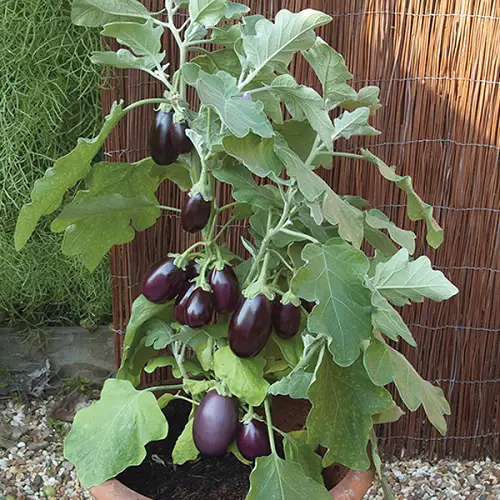
Botanical Name: Solanum melongena
Eggplants carry a distinct blue-purple hue, which makes them stand out with their green foliage. Some varieties also come in white color. These veggies taste best when sauteed or grilled.
How to Grow: Check out our article on growing eggplants here



I love these Healthy blue vegetables, seems delicious . Thanks for sharing this with us and will love to try this one.